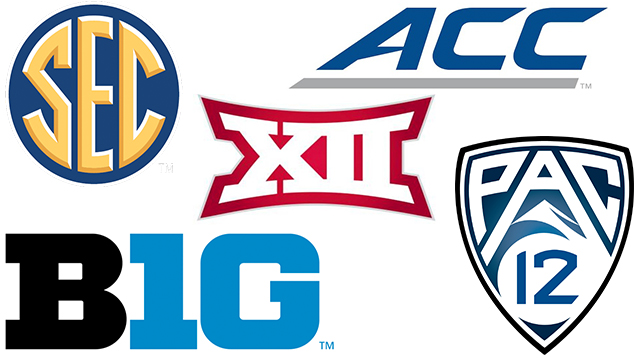Picture this: You’re a member of Penn State’s basketball team and you just finished up a road game against UCLA on a Wednesday night. The game gets done around 9:00 p.m. Pacific Time. You do your postgame interviews, shower, grab something to eat and eventually board the plane at around 10:30 p.m. The plane leaves by 11:00 p.m. and you sit on a five-hour flight only to get back to campus at 6:00 a.m. Eastern Time.
This is one of the many geographical concerns that the Big 10’s new conference realignment will face for a variety of different sports. This past summer it was announced that UCLA, USC, Oregon and Washington would be joining the Big 10 conference. One of the main reasons being money. The Big 10 is one of the most popular conferences in college football which is enticing to popular athletic schools. Not to mention their schools’ former conference (The Pac-12) television deal is expiring, which means they won’t have to pay a fee for leaving.
The timing makes sense, but you can’t help but think about the amount of traveling schools will have to do. The team that’s furthest east in the Big 10 is Rutgers, which is around a five-hour flight from each of the new West Coast teams joining the conference.
The same situation is going down in a different conference, as Stanford and California will be joining the ACC which is a predominantly East Coast conference. A flight from Syracuse, New York to California is around 5-6 hours.
The whole thing just seems unreasonable when the geographic conference structure was perfectly set up.
When one school leaves a conference, it also puts other schools in a panic to make sure they have a place to play for the future. Schools like BYU, Houston, Cincinnati and UCF all got promoted from their mid-major conference to take the places of Texas and Oklahoma in the Big 12. Arizona, Arizona State, Utah and Colorado also had to join due to the PAC-12’s dismantling. Unfortunately for schools like Washington State and Oregon State, they have to become affiliate members of the West Coast Conference, which is Mid-Major. When one domino fell it immediately impacted many other schools throughout America.
Throughout the entirety of college athletics, conferences have been based on proximity between other schools. The SEC had teams in the South, The Big 10 had the Midwest, the ACC had the East Coast, the Big 12 had states in the central part of the country and the PAC-12 had the West Coast. Combined, these schools are considered “The Power 5” and the highest form of Division 1 athletics. It will now be known as “The Power 4” as the PAC-12, which is known as “the conference of champions”, will no longer be a conference. It’s unfortunate for the fans of collegiate sports that grew up and have known this conference structure of Division 1 athletics who now have to adapt to an entirely new playing field.
In this day and age, schools could care less about how far they have to travel to play a game. They want to do what’s going to make them the most money and give them a chance to be competitive, which you can’t blame them for. For example, Texas and Oklahoma are joining the SEC, which is one of the most popular conferences up there with the Big 10. It would be stupid for both of those teams not to take an offer to be a part of a historic conference like that. However, when West Coast teams decide to migrate over to a Midwest or East Coast conference it complicates things.
We will get to see exciting new matchups that we normally wouldn’t see. USC, UCLA, Oregon and Washington all provide solid football and basketball programs to accompany the many already good programs in the Big 10. Texas and Alabama brought us two very good matchups the past couple years, and I’m sure people will not complain about seeing more games between them. In the end, everyone will likely get used to it in a couple years, but geographically for the many students and coaches competing the whole thing is a mess.









